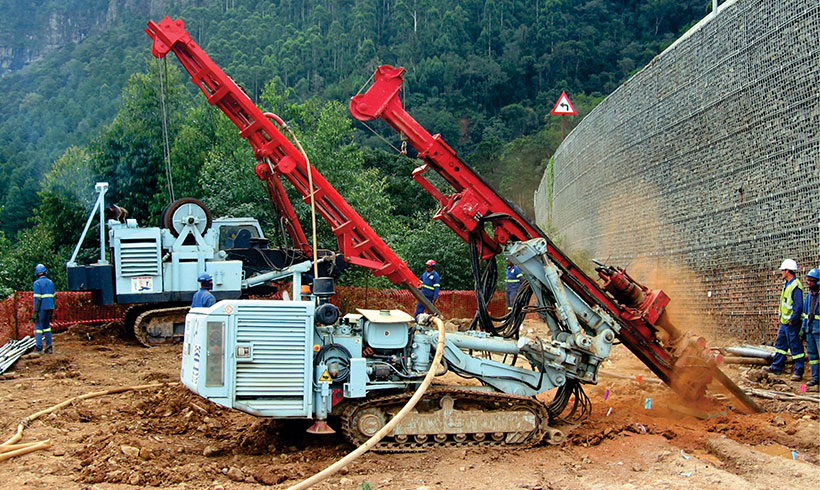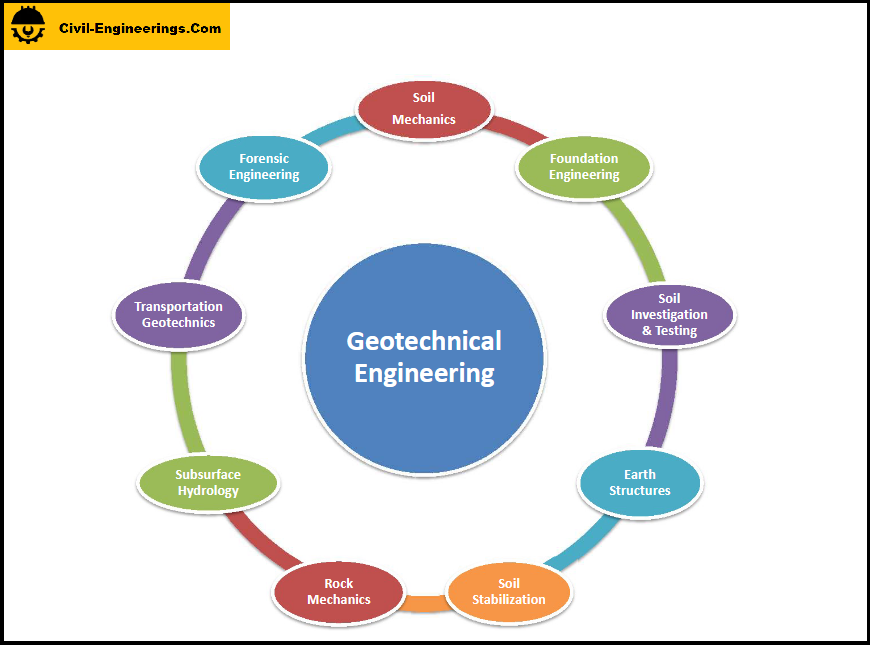An Unbiased View of Geotechnical Engineering For Construction Projects
Not known Factual Statements About Geotechnical Engineering For Construction Projects
Table of ContentsThe Best Strategy To Use For Geotechnical Engineering For Construction ProjectsSome Known Questions About Geotechnical Engineering For Construction Projects.The Basic Principles Of Geotechnical Engineering For Construction Projects The smart Trick of Geotechnical Engineering For Construction Projects That Nobody is DiscussingThe Only Guide to Geotechnical Engineering For Construction ProjectsAll About Geotechnical Engineering For Construction ProjectsEverything about Geotechnical Engineering For Construction Projects
Principles and Method of Ground Renovation. Ground Renovation Principles And Applications In Asia. Style evaluation in rock technicians.Cengage Understanding, Stamford, 666 p. Atkinson, J., 2007. The mechanics of soils and structures. Taylor & Francis, N.Y., 442 p. Drifting Offshore Wind Generators: Responses in a Sea state Pareto Ideal Styles and Economic Assessment, P. Sclavounos et al., October 2007. Nicholson, D, Tse, C and Penny, C. (1999 ). The Observational Technique in ground design concepts and applications.
Geotechnical Engineering For Construction Projects for Dummies
Laboratory and area screening plays an important function in this process. By removing samples from the planet's subsurface and using a suite of examinations, geotechnical designers can forecast the behaviour of dirt layers and assess their viability for various construction efforts. The essence of geotechnical design in civil engineering can not be overemphasized, attributable to numerous variables: The preliminary action in any kind of geotechnical research entails figuring out the dirt type at the building site.
The structure acts as the bedrock of any type of building and construction project. Choosing the suitable structure kind is a choice that hinges on the extensive evaluation offered by geotechnical engineering.

Geotechnical website examination is a vital step in the planning and execution of any building task. It entails the collection and evaluation of information connected to the physical residential or commercial properties of dirt and rock underneath a proposed construction site. This information is important for the style and building and construction of secure, stable, and sustainable structures.
Fascination About Geotechnical Engineering For Construction Projects
In this blog site, we will certainly dig into the relevance of geotechnical site investigation, its different components, and just how it benefits building projects. Geotechnical website investigation, additionally understood as subsurface exploration, includes a series of tasks aimed at establishing the soil, rock, and groundwater problems at a construction website. The main goals are to identify prospective geotechnical threats, examine the design residential or commercial properties of subsurface products, and offer referrals for the style and building and construction of foundations, keeping walls, and various other structures.
This may include geological maps, aerial photos, previous examination records, and historic data. The workdesk study helps in determining possible geotechnical problems and intending the subsequent fieldwork. Following the desk study, a website reconnaissance is performed to aesthetically inspect the site and its surroundings. This entails observing the topography, water drainage patterns, existing structures, vegetation, and any signs of instability or disintegration.
Little Known Facts About Geotechnical Engineering For Construction Projects.
Superficial examination pits are excavated to directly observe and example the soil and rock. This approach is helpful for examining the top layers of the subsurface and determining near-surface threats. Non-invasive geophysical methods, such as seismic refraction, ground-penetrating radar (GPR), and electric resistivity tomography (ERT), are used to map subsurface conditions and spot anomalies.
Soil and rock examples accumulated during the field examination are subjected to laboratory testing to establish their physical and mechanical buildings. These tests browse around these guys offer crucial data for geotechnical analysis and style.
The key advantage of geotechnical site investigation is making sure the safety and security and stability of structures. By comprehending the subsurface problems, designers can make foundations and other structural aspects that can stand up to the lots and ecological pressures they will be subjected to. This lessens the danger of negotiation, decrease, and structural failure.
The smart Trick of Geotechnical Engineering For Construction Projects That Nobody is Discussing
Recognizing dirt qualities can guide the selection of excavation techniques, dewatering methods, and ground renovation procedures. This guarantees reliable and secure building and construction methods. Geotechnical site examinations are commonly required by constructing codes and laws. Sticking to these requirements makes certain conformity with lawful and security criteria, preventing possible legal liabilities and task delays.
This info is invaluable for job supervisors, engineers, and specialists in developing sensible schedules, budget plans, and backup plans. Geotechnical Engineering for Construction Projects. Skyscraper Structure in a Coastal AreaIn a coastal city, a high-rise domestic structure was intended on a website with believed loose sand deposits and a high water table. A comprehensive geotechnical examination, including borehole boring, CPT, and geophysical studies, was performed
Not known Details About Geotechnical Engineering For Construction Projects
Based upon these searchings for, the structure style was customized to consist of deep heap structures expanding right into steady strata, and ground enhancement strategies, such as vibro-compaction, were implemented to mitigate liquefaction dangers. This proactive approach made sure the safety and security and security of the structure while preventing costly post-construction removal. Facilities Advancement on a Sloping TerrainA major framework task, including the building and construction of a freeway and bridges, was intended on a sloping terrain with high inclines.

The Leaning Tower of Pisa (Italy), a famous building marvel, is notorious for its unplanned tilt from substantial geotechnical problems. The tower's foundation was improperly designed to handle the soft, unpredictable soil beneath it, bring about uneven negotiation and its unique lean. Our globe is populated with outstanding framework projectsfrom towering skyscrapers to stretching bridgesall standing statement to the evolution of the different construction equipment and approaches available.
Geotechnical engineering is a specialized field within civil design that concentrates on studying the habits of planet materials. This branch digs deep right into the groundinvestigating exactly how the soil, rock, and groundwater at a building website can influenceand be influenced bythe facilities that we erect on and right into them. Before a single block is laid Website or a concrete foundation poured, geotechnical designers probe right into the earthgathering important data regarding the website's soil composition, rock structure, and groundwater degrees.
Some Of Geotechnical Engineering For Construction Projects

is a tool used to assess the stability and load-bearing ability of piles during installation, leveraging the principle of wave breeding. It optimizes building performance by providing real-time assessments, thus ensuring safe and efficient stack structures. Among the functional applications of geotechnical design entails deciding and performing the right techniques for foundation building.
Load driving stands for even more than the mere act of putting architectural components right into the ground. On the contrary, it is a thoroughly orchestrated procedure of moving a framework's lots past the much less steady dirt layers more detailed to the surfacedown to the extra significant strata that exist under. When it comes to pile look at this now driving, consider how geotechnical designers adeptly use this method to evenly disperse the framework's weight.